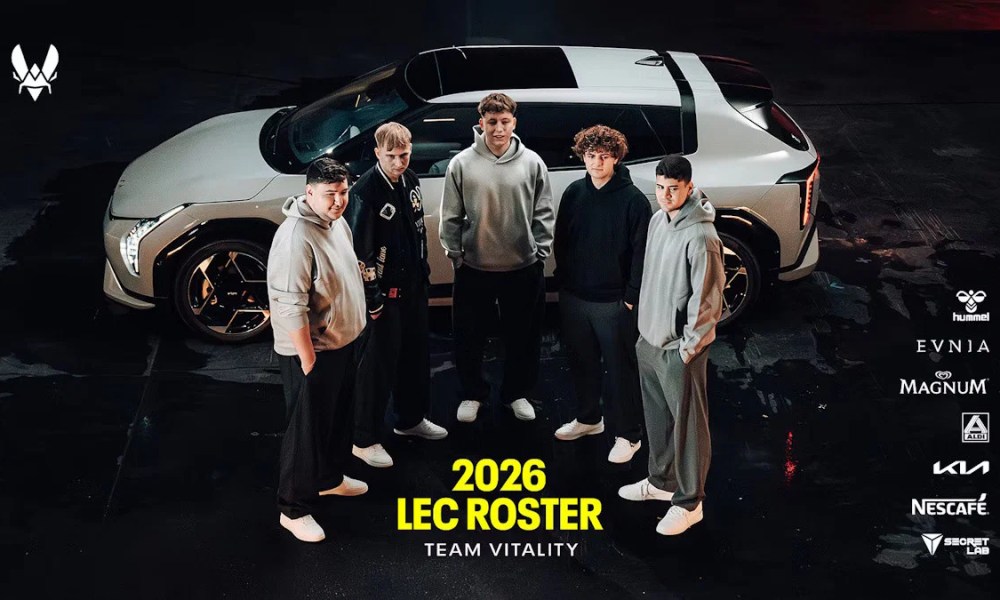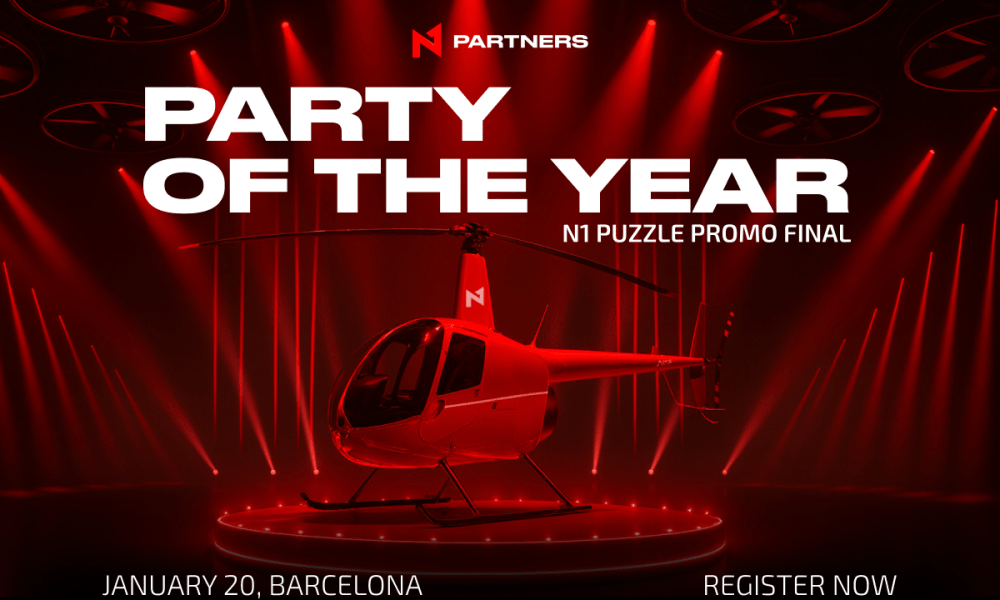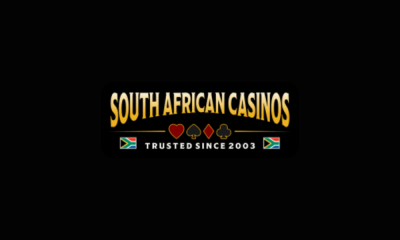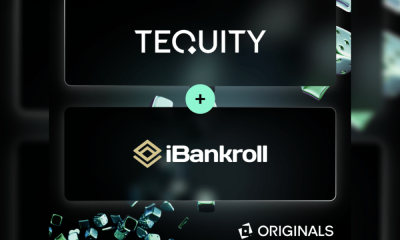Latest News
INTRALOT Announces First Quarter 2021 Financial Results

INTRALOT SA (RIC: INLr.AT, Bloomberg: INLOT GA), an international gaming solutions and operations leader, announces its financial results for the three-month period ended March 31st, 2021, prepared in accordance with IFRS.
Group Revenue at €102.0m in 1Q21 (+9.3% y-o-y).
EBITDA in 1Q21 at €24.4m (+55.4% y-o-y), while Adjusted EBITDA at €20.8m (+56.4% y-o-y).
NIATMI (Net Income After Tax and Minority Interest) from continuing operations at €-7.3m, improved by 57.8% compared to a year ago.
North America operations, under Intralot Inc., achieved significant y-o-y growth (Revenue +21.8%, EBITDA +81.8%).
Group OPEX in 1Q21 is better by 8.3% y-o-y, with Greek entities OPEX lower by 25.7% y-o-y, without taking into consideration the capital structure optimization expenses.
Operating Cash Flow at €21.6m in 1Q21 (+127.4% y-o-y).
Group Net CAPEX in 1Q21 was €2.9m, lower by 48.2% compared to a year ago.
Group Cash at the end of 1Q21 at €90.6m.
Net Debt at €643.7m at the end of 1Q21.
The COVID-19 pandemic impact for 1Q21 has been restrained in the vicinity of €1.5m at Group’s EBITDA level.
In May 2021, INTRALOT announced the sale of its 80% stake in “Intralot do Brasil”, to SAGA, the only other shareholder of Intralot do Brasil, holding 20% of the company, for a total cash consideration of €0.7m. INTRALOT will continue to provide its gaming technology to Intralot do Brasil following closing of the transaction.
Also in May 2021, INTRALOT announced that its subsidiary in The Netherlands INTRALOT BENELUX BV, in co-operation with the Nederlandse Loterij, completed the transition of the operator’s full gaming portfolio enabled by the innovative LotosX platform, and rolled out 4,300 Photon terminals along with its robust signage solution empowering further the retail channel of Nederlandse Loterij’s Lottery games and Sports Betting offering.
Group Headline Figures
| (in € million) | 1Q21 | 1Q20 | % | LTM | ||
| Change | ||||||
| Revenue (Turnover) | 102.0 | 93.3 | 9.3% | 373.5 | ||
| GGR | 80.5 | 74.3 | 8.3% | 299.1 | ||
| OPEX1 | -23.2 | -25.3 | -8.3% | -93.1 | ||
| EBITDA2 | 24.4 | 15.7 | 55.4% | 74.9 | ||
| EBITDA Margin (% on | 23.9% | 16.8% | +7.1pps | 20.1% | ||
| Revenue) | ||||||
| EBITDA Margin (% on GGR) | 30.3% | 21.1% | +9.2pps | 25.0% | ||
| Adjusted EBITDA3 | 20.8 | 13.3 | 56.4% | 63.3 | ||
| Capital Structure | -5.0 | -0.3 | – | -11.5 | ||
| Optimization expenses | ||||||
| D&A | -16.0 | -18.2 | -12.1% | -66.3 | ||
| EBT | -3.4 | -14.9 | 77.2% | -82.6 | ||
| EBT Margin (%) | -3.3% | -16.0% | +12.7pps | -22.1% | ||
| NIATMI from continuing | -7.3 | -17.3 | 57.8% | -94.1 | ||
| operations | ||||||
| Total Assets | 612.1 | 755.3 | – | – | ||
| Gross Debt | 734.3 | 753.1 | – | – | ||
| Net Debt | 643.7 | 611.1 | – | – | ||
| Operating Cash Flow from | 21.6 | 9.5 | 127.4% | 49.8 | ||
| total operations | ||||||
| Net CAPEX | -2.9 | -5.6 | -48.2% | -33.3 | ||
INTRALOT Chairman & CEO Sokratis P. Kokkalis noted:
“First quarter results show strong Revenue and EBITDA growth, driven by robust operational performance and successful implementation of cost containment measures, while maintaining a strong cash position. At the same time, we continue to sharpen our focus on strategic markets with higher margins, launch new operations, such as Croatia, and roll out our new product portfolio, overall pointing to a very healthy operational performance for 2021.”
- OPEX presented exclude the capital structure optimization expenses.
- The Group defines “EBITDA” as “Operating Profit/(Loss) before tax” adjusted for the figures “Profit/(loss) from equity method consolidations”, “Profit/(loss) to net monetary position”, “Exchange Differences”, “Interest and related income”, “Interest and similar expenses”, “Income/(expenses) from participations and investments”, “Write-off and impairment loss of assets”, “Gain/(loss) from assets disposal”, “Reorganization costs” and “Assets’ depreciation and amortization”.
- Calculated as Proportionate EBITDA of fully consolidated entities including EBITDA from equity investment in Taiwan.
OVERVIEW OF RESULTS
REVENUE
Reported consolidated revenue posted an increase compared to 1Q20, leading to total revenue for the three-month period ended March 31st, 2021, of €102.0m (+9.3%).
- Lottery Games was the largest contributor to our top line, comprising 63.0% of our revenue, followed by Sports Betting contributing 19.1% to Group turnover. VLTs represented 8.7% and Technology contracts accounted as well for 8.7% of Group turnover, while Racing constituted the 0.5% of total revenue of 1Q21.
- Reported consolidated revenue for the three-month period is higher by €8.7m year over year. The main factors that drove top line performance per Business Activity are:
- €+1.3m (+3.9%) from our Licensed Operations (B2C) activity line, with the increase attributed mainly to higher revenue in:
- Malta (€+2.8m), with the variance attributable mainly to the COVID-19 impact at the end of the first quarter of 2020.
The increase in our Licensed Operations activity line was partially mitigated by the lower performance in:
- other Licensed Operations (referring to Brazil and Argentina), which dropped by €-1.5m, impacted mainly by the FX currency translation.
- €+5.3m (+65.4%) from our Management (B2B/ B2G) contracts activity line with the variance driven by:
- the surplus from our Turkish operations (€+3.1m), driven by Bilyoner’s improved top line performance, favored by the strong growth of the online market. In 1Q21, the local Sports Betting market expanded close to 2.0 times y-o-y, with the online segment representing close to 92% of the market at the end of 1Q21. Performance in Euro terms was partially mitigated by the headwinds in Turkish lira (32.3% Euro appreciation versus a year ago – in YTD average terms),
- the launch of US Sports Betting in Montana and Washington, D.C. in late 2020 (€+1.3m), and
- Morocco’s (€+0.9m or +31.2% y-o-y) improved performance, due to the COVID-19 impact in late 1Q20.
- €+2.1m (+4.0%) from our Technology and Support Services (B2B/ B2G) activity line, with the increase attributed mainly to:
- our US operations’ increased revenue (€+5.5m), mainly driven by the strong growth in our Lottery operations, while further boosted by a significant jackpot in January 2021, despite the effect from the adverse USD movement (9.1% Euro appreciation versus a year ago — in YTD average terms) and the lower merchandise sales in the current period.
The increase in our Technology and Support Services activity line was partially mitigated by the lower performance in:
- The Netherlands (€-1.2m), impacted by the revised commercial terms which affected half of the first quarter of 2020 vs. full quarter effect in 2021,
- Australia (€-1.1m), driven mainly by one-off merchandise sales in 1Q20, as well as the phasing-out of COVID-19 impact, while partially offset by the favorable currency movement, and
- sales from other jurisdictions (€-1.1m), impacted mainly by lower merchandise sales in the current period and the COVID-19 impact.
- Constant currency basis: In 1Q21, revenue — net of the negative FX impact of €13.2m — reached €115.2m (+23.5% y-o-y).
GROSS GAMING REVENUE & Payout
- Gross Gaming Revenue (GGR) from continuing operations concluded at €80.5m in 1Q21, posting an increase of 8.3% (or €+6.2m) year over year, attributable to:
- the increase in the non-payout related GGR (€+7.7m vs. 1Q20), driven mainly by the increased top line contribution of our US operations, as well as the improved performance of Bilyoner in the current period.
The GGR increase was partially counterbalanced by:
– the drop in our payout related GGR (-10.9% y-o-y or €-1.5m), driven mainly by the higher average payout ratio across all licensed operations in 1Q21 and especially in Malta, combined with the adverse FX impact from our licensed operations in Latin America (+2.8% y-o-y on wagers from licensed operations4). 1Q21 Average Payout Ratio5 increased by 5.5pps vs. LY (64.0% vs. 58.5%), affected mainly by the higher weighted contribution from our operations in Malta.
- Constant currency basis: In 1Q21, GGR — net of the negative FX impact of €10.1m — reached €90.6m (+21.9% y-o-y).
OPERATING EXPENSES6 & EBITDA7
- Total Operating Expenses decreased by €2.1m (or 8.3%) in 1Q21 (€23.2m vs. €25.3m in 1Q20). The variance is largely driven by the lower operating expenses across many key regions, such as the US and Morocco, and especially in the HQ, following cost savings and COVID-19 mitigation actions. The decrease was further supported by lower D&A in the current period, while it was only partially offset by the higher advertising costs in Bilyoner.
- Other Operating Income from continuing operations concluded at €5.5m, presenting an increase of 52.8% y-o-y (or €+1.9m), driven by higher equipment lease income in the USA.
- EBITDA, from continuing operations, amounted to €24.4m in 1Q21, posting an increase of 4% (or €+8.7m) compared to the 1Q20 results from continuing operations. 1Q21 Organic performance8 was boosted by the significant growth of our US operations in both Lottery and the new Sports Betting stream, Bilyoner’s improved performance and the operating expenses containments across many jurisdictions. The EBITDA increase was partially counterbalanced by Malta’s higher average payout ratio in 1Q21, a one-off revenue recognition in Australia in 1Q20, the revised commercial terms in Netherlands, as well as the adverse FX impact8 of currencies movement across many key markets (mainly US and Turkey).
- Licensed Operations Revenue also include a small portion of non-Payout related revenue, i.e., value-added services, which totaled €0.8m and €0.4m for 1Q21 and 1Q20, respectively.
- Payout ratio calculation excludes the IFRS 15 impact for payments to customers.
- Operating Expenses analysis excludes expenditures related to capital structure optimization.
- EBITDA analysis excludes Depreciation & Amortization, and expenditures related to capital structure optimization.
- CPI adjusted for Turkey and Argentina (proxy).
- On a yearly basis, EBITDA margin on sales improved to 23.9%, compared to 16.8% in 1Q20 (+7.1pps), as a result of revenue growth (mainly in the US and Turkey), combined with operating expenses containments across many key regions (mainly in HQ, US and Morocco).
- LTM EBITDA rose to €74.9m, up by 13.1% vs. FY20.
- Constant currency basis: In 1Q21, EBITDA, net of the negative FX impact of €3.9m, reached €28.3m (+80.3% y-o-y).
EBT / NIATMI
- EBT in 1Q21 totaled €-3.4m, compared to €-14.9m in 1Q20, with the key drivers of the improvement being:
- the impact of the increased EBITDA (€+8.7m vs. 1Q20), as described above,
- the better FX results (€+4.2m vs. 1Q20), as a result of the USD and other currencies movement against Euro, as well as the positive effect from the reclassification of FX reserves to Income Statement applying IFRS 10, and
- the decreased D&A (€+2.2m), due to increased impairments in the previous periods.
With the increase at EBT level being partially offset by:
– the higher capital structure optimization expenses in 1Q21 (€-4.7m).
- Constant currency basis: In 1Q21 EBΤ, adjusted for the FX impact, reached €+1.0m, from €-14.1m in 1Q20.
- NIATMI from continuing operations in 1Q21 concluded at €-7.3m compared to €-17.3m in NIATMI from total operations in 1Q21 amounted to €-8.2m (improved by €9.4m vs. a year ago), including the performance of the discontinued operations in Bulgaria and Peru.
- Constant currency basis: NIATMI (total operations) in 1Q21, on a constant currency basis, reached €-10.3m from €-17.4m in 1Q20.
CASH-FLOW
- Operating Cash-flow in 1Q21 amounted to €21.6m, increased by €12.1m, compared to 1Q20. Excluding the operating cash-flow contribution of our discontinued operations (mainly Bulgaria) and the capital structure optimization expenses paid, the cash-flow from operating activities is higher by €15.9m vs. a year ago and is largely driven by the positive variance in Income Taxes paid (€+12.2m), attributed to Income Tax returns during the current period vs. payments in 1Q20, and the higher recorded EBITDA y-o-y from continuing operations (€+8.7m), while partially offset by the adverse working capital movement of €-5.5m (€-7.3m in 1Q21, vs. €-1.8m in 1Q20).
- Adjusted Free Cash Flow9 in 1Q21 increased by €24.4m to €4.1m, compared to €-20.3m a year The main contributors to this variance were the positive swing in the Income Taxes Paid (€+12.2m), following an income tax return in 1Q21, the higher recorded EBITDA (€+8.7m y-o-y), and the lower Net Dividends paid (€+2.5m), driven mainly by Inteltek’s dividend paid in 1Q20 as part of settlement procedures after its contract discontinuation. Excluding Parent company tax audit payments and returns, as well as Inteltek’s contract discontinuation impact in the previous period, 1Q21 Adjusted Free Cash Flow stands at €-1.1m, or €+8.3m above 1Q20 levels.
- Calculated as EBITDA – Maintenance CAPEX – Cash Taxes – Net Cash Finance Charges (excluding refinancing charges – Net Dividends Paid; all finance metrics exclude the impact of discontinued operations.
- Net CAPEX in 1Q21 was €2.9m, compared to €5.6m in 1Q20, significantly decreased following the completion of prior years’ investments and projects. Headline CAPEX items in 1Q21 include €0.9m towards R&D and project pipeline delivery, and €0.9m in the US. All other net additions amount to €1.1m for 1Q21. Maintenance CAPEX accounted for €0.8m, or 28.0% of the overall capital expenditure in 1Q21, from €1.6m or 28.1% in 1Q20.
- Net Debt, as of March 31st, 2021, stood at €643.7m, decreased by €7.4m compared to December 31st, 2020. The Net Debt movement was impacted primarily by the Net Investments (€-13.3m, referring mainly to Intralot de Peru sale impact), the bonds IFRS treatment positive effect (€-9.3m), as well as an income tax return in the first quarter of 2021 related to the Parent Company tax audit payments of the previous periods (€-5.2m). The Net Debt decrease was only partially offset by the Restricted Bank Deposits for the period (€+3.2m), the payments towards Capital Structure Optimization (€+3.1m), and the investments towards the growth of our business, mainly for our projects in the US and Croatia (€+1.9m). Normal course of business in the Net Debt movement reflects March coupon payments and the adverse Working Capital, that fully offset the positive Operating Cash Flows.
CORONAVIRUS PANDEMIC IMPACT UPDATE
The economic fallout from COVID-19 continued to affect business activities in the beginning of 2021, and restrictions in most of the regions across the world were still enforced to cope with the spread of the pandemic. However, as vaccinations are progressing, governments have loosened COVID-19 measures after months of lockdowns, and gradually re-opened economic activities.
Gaming market in most of the regions where we operate has started to improve, while US Lottery market shows high degree of resilience. Based on the current performance of our operations in the first months of 2021 and the actions undertaken by most of our subsidiaries, no significant EBITDA impact is expected post 1Q21 from the pandemic. In any case, the scale and magnitude of COVID-19 impact for 2021 is continuously assessed and all containment measures assumed in 2020 remain intact and have been enhanced in order to absorb the potential impact in the financial results of 2021. The extent to which the COVID-19 pandemic may impact the financial performance in 2021 will depend on future development of the pandemic and the efficiency of the actions taken by the governments. This uncertainty will require us to continually adapt our strategy and initiatives and continuously assess the situation.
The health and safety of our team remains our top priority. With this in mind, we have immediately complied with all measures imposed by local governments and used technology in order to immediately enable a substantive majority of our personnel to work and collaborate remotely, without affecting the performance and quality standards of the Group.
9
RECENT/ SIGNIFICANT COMPANY DEVELOPMENTS
- On January 14th, 2021, the Company announced that OPAP exercised its two-year extension option of the contract with INTRALOT for the continuation of the collaboration of the two companies in the field of numerical lotteries and services from August 2021 to July 2023.
- On February 8th, 2021, INTRALOT announced that it has reached a binding agreement with Nexus Group in Peru to sell its entire stake of 20% in Intralot de Peru SA, an associate of INTRALOT Group, which was consolidated through the Equity method, for a cash consideration of USD 21.0m. In addition, the Company signed a three-year extension of its current contract with Intralot de Peru SA through 2024, to continue to provide its gaming technology and support services. The transaction was completed on February 24th, 2021, with the net cash consideration, after taxes and transaction expenses, amounting to USD 16.2m.
- On March 23rd, 2021, INTRALOT announced the amendment of the contract of INTRALOT Maroc, a subsidiary of the INTRALOT Group acting as games operator in Morocco, with La Marocaine Des Jeux et des Sports (MDJS), a state lottery offering sports betting and other games of chance in Morocco, which was signed in June 2019. According to this amendment, counterparties agree to reduce the duration of the contract, which was initially effective for an 8-year term, ending 31/12/2022.
- On May 14th, 2021, INTRALOT announced that it has reached a binding agreement with “SAGA CONSULTORIA E REPRESENTAÇÕES COMERCIAIS E EMPRESARIAIS” (“SAGA”) in Brazil to sell its entire stake in “Intralot do Brasil Comércio de Equipamentos e Programas de Computador LTDA” (“Intralot do Brasil”), representing 80% of the company’s voting capital. SAGA is the only other shareholder of Intralot do Brasil holding 20% of the company. INTRALOT will continue to provide its gaming technology to Intralot do Brasil following closing of the transaction. The total cash consideration for the stake sale amounts to €0.7m.
- On May 26th, 2021, INTRALOT announced that its subsidiary in The Netherlands INTRALOT BENELUX BV, in co-operation with the Nederlandse Loterij, completed the transition of the operator’s full gaming portfolio enabled by the innovative LotosX platform. Additionally,
INTRALOT has rolled out 4,300 Photon terminals along with its robust signage solution empowering further the retail channel of Nederlandse Loterij’s Lottery games and Sports Betting offering.
10
APPENDIX
Performance per Business Segment10
YTD Performance
Performance per Geography
Revenue Breakdown
| (in € million) | 1Q21 | 1Q20 | % | ||
| Change | |||||
| Europe | 34.4 | 39.0 | -11.8% | ||
| Americas | 55.0 | 49.7 | 10.7% | ||
| Other | 16.8 | 14.0 | 20.0% | ||
| Eliminations | -4.2 | -9.4 | – | ||
| Total Consolidated Sales | 102.0 | 93.3 | 9.3% |
Gross Profit Breakdown
| (in € million) | 1Q21 | 1Q20 | % | ||
| Change | |||||
| Europe | -1.8 | 2.5 | – | ||
| Americas | 14.4 | 9.1 | 58.2% | ||
| Other | 14.2 | 9.8 | 44.9% | ||
| Eliminations | -0.7 | -2.3 | – | ||
| Total Consolidated Gross Profit | 26.1 | 19.1 | 36.6% |
- Part of the US revenue that concerns SB management, has been included under the category “Game Management”. The rest of the US revenue is included under the “Technology” business segment.
11
| Gross Margin Breakdown | ||||||
| % | ||||||
| 1Q21 | 1Q20 | |||||
| Change | ||||||
| Europe | -5.2% | 6.4% | -11.6pps | |||
| Americas | 26.2% | 18.3% | +7.9pps | |||
| Other | 84.5% | 70.0% | +14.5pps | |||
| Total Consolidated Gross Margin | 25.6% | 20.5% | +5.1pps | |||
INTRALOT Parent Company results
- Revenue for the period decreased by 55.3%, to €4.6m, with the decrease attributable mainly to one-off equipment sales in 1Q20, as well as lower rendering of services towards the Group’s subsidiaries in the current period.
- EBITDA shaped at €-4.5m from €-2.4m in 1Q20, variance affected mainly by the revenue decrease, while partially offset by the containments in the Company’s operating expenses.
- Earnings after Taxes (EAT) at €-0.1m from €-10.2m in 1Q20.
| (in € million) | 1Q21 | 1Q20 | % | LTM | ||||
| Change | ||||||||
| Revenue | 4.6 | 10.3 | -55.3% | 42.0 | ||||
| Gross Profit | -3.1 | 0.1 | – | 12.3 | ||||
| Other Operating Income | – | – | – | 0.2 | ||||
| OPEX11 | -5.1 | -6.9 | -26.1% | -25.7 | ||||
| EBITDA11 | -4.5 | -2.4 | -87.5% | 0.7 | ||||
| EAT | -0.1 | -10.2 | 99.0% | -30.5 | ||||
| CAPEX (paid) | -0.5 | -1.9 | -73.7% | -6.4 |
- Operating Expenses and EBITDA presented exclude the expenditures related to capital structure optimization.
12
SUMMARY OF FINANCIAL STATEMENTS
Group Statement of Comprehensive Income
| (in € million) | 1Q21 | 1Q20 | % | LTM | |||||||||
| Change | |||||||||||||
| Revenue | 102.0 | 93.3 | 9.3% | 373.5 | |||||||||
| Gross Profit | 26.1 | 19.1 | 36.6% | 82.3 | |||||||||
| Other Operating Income | 5.5 | 3.6 | 52.8% | 19.5 | |||||||||
| OPEX | -23.2 | -25.3 | -8.3% | -93.1 | |||||||||
| EBITDA | 24.4 | 15.7 | 55.4% | 74.9 | |||||||||
| Margin | 23.9% | 16.8% | +7.1pps | 20.1% | |||||||||
| Capital Structure Optimization | -5.0 | -0.3 | – | -11.5 | |||||||||
| expenses | |||||||||||||
| D&A | -16.0 | -18.2 | -12.1% | -66.3 | |||||||||
| EBIT | 3.4 | -2.9 | – | -2.8 | |||||||||
| Interest expense (net) | -11.8 | -12.0 | 1.7% | -48.2 | |||||||||
| Exchange differences | 3.7 | -0.5 | – | -5.4 | |||||||||
| Other | 1.3 | 0.5 | 160.0% | -26.2 | |||||||||
| EBT | -3.4 | -14.9 | 77.2% | -82.6 | |||||||||
| NIATMI | -8.2 | -17.6 | 53.4% | -96.8 | |||||||||
| NIATMI continuing | -7.3 | -17.3 | 57.8% | -94.1 | |||||||||
| NIATMI discontinued | -0.9 | -0.3 | -200.0% | -2.7 | |||||||||
| Group Statement of Financial Position | |||||||||||||
| (in € million) | 1Q21 | FY20 | |||||||||||
| Tangible Assets | 138.9 | 134.3 | |||||||||||
| Intangible Assets | 200.7 | 202.0 | |||||||||||
| Other Non-Current Assets | 19.4 | 19.2 | |||||||||||
| Inventories | 24.2 | 25.7 | |||||||||||
| Trade and Other Short-term Receivables | 138.3 | 151.5 | |||||||||||
| Cash and Cash Equivalents | 90.6 | 100.0 | |||||||||||
| Assets Held for Sale | – | 16.2 | |||||||||||
| Total Assets | 612.1 | 648.9 | |||||||||||
| Share Capital | 47.1 | 47.1 | |||||||||||
| Other Equity Elements | -270.6 | -269.3 | |||||||||||
| Reserves from profit / (loss) recognized directly in other | – | -0.6 | |||||||||||
| comprehensive income and are related to assets held for sale | |||||||||||||
| Non-Controlling Interests | 1.5 | 3.7 | |||||||||||
| Total Shareholders’ Equity | -222.0 | -219.1 | |||||||||||
| Long-term Debt | 480.5 | 476.2 | |||||||||||
| Provisions/ Other Long-term Liabilities | 20.8 | 21.5 | |||||||||||
| Short-term Debt | 253.8 | 274.9 | |||||||||||
| Other Short-term Liabilities | 79.0 | 95.4 | |||||||||||
| Total Liabilities | 834.1 | 868.0 | |||||||||||
| Total Equity and Liabilities | 612.1 | 648.9 | |||||||||||
13
Group Statement of Cash Flows
| (in € million) | 1Q21 | 1Q20 | |
| EBT from continuing operations | -3.4 | -14.9 | |
| EBT from discontinued operations | 0.5 | – | |
| Plus/less Adjustments | 23.3 | 31.1 | |
| Decrease/(increase) of Inventories | -1.3 | 1.0 | |
| Decrease/(increase) of Receivable Accounts | 13.5 | -0.2 | |
| (Decrease)/increase of Payable Accounts | -17.6 | -2.0 | |
| Income Tax Paid | 6.6 | -5.5 | |
| Net Cash from Operating Activities | 21.6 | 9.5 | |
| Net CAPEX | -2.9 | -5.6 | |
| (Purchases) / Sales of subsidiaries & other investments | 13.3 | -0.5 | |
| Restricted bank deposits | -3.2 | -0.7 | |
| Interest received | 0.3 | 0.6 | |
| Dividends received | – | 1.0 | |
| Net Cash from Investing Activities | 7.5 | -5.2 | |
| Cash inflows from loans | – | 27.5 | |
| Repayment of loans | -11.2 | -27.2 | |
| Repayment of Leasing Obligations | -1.4 | -1.8 | |
| Interest and similar charges paid | -21.4 | -22.1 | |
| Dividends paid | -5.1 | -7.9 | |
| Net Cash from Financing Activities | -39.1 | -31.5 | |
| Net increase / (decrease) in cash for the period | -10.0 | -27.2 | |
| Exchange differences | 0.6 | -1.9 | |
| Cash at the beginning of the period | 100.0 | 171.1 | |
| Cash at the end of the period from total operations | 90.6 | 142.0 | |
Powered by WPeMatico
Latest News
Mr. Gamble Forum Revamp Sparks Record Growth and Global Expansion

Mr. Gamble Forum, a fast-growing online gambling community, has rolled out a major platform revamp that is already delivering record-breaking growth in traffic, visibility, and user engagement. Timed perfectly ahead of the industry’s busiest season, the update strengthens the forum’s position as a go-to destination for casino and sports betting discussions worldwide.
The refreshed platform combines a cleaner design, expanded content, and new marketing capabilities, all built around a single goal: creating a space where players can freely share real experiences while operators connect with highly motivated users.
“We’ve invested a lot of effort into improving both the user experience and the commercial potential of the forum,” said Paul Puolakka, CMO of Mr. Gamble. “This update reinforces our vision of an open, trusted community that benefits players and partners alike—and the growth we’re seeing confirms we’re on the right track.”
Strong Growth Momentum Following the Revamp
The impact of the update has been immediate. In Novembe 2025, compared to December 2024, Mr. Gamble Forum recorded a sharp rise across all key performance metrics. Daily clicks increased by 270%, daily impressions climbed by 471%, and monthly clicks grew by 380%. These numbers reflect not only improved visibility in search engines but also a growing appetite for a community where players can openly discuss casinos, bonuses, slots, and betting strategies.
Sports Betting Content Broadens the Forum’s Scope
One of the most significant additions is the expansion into sports betting content. The forum now features dedicated discussions around upcoming games, betting strategies, and odds, giving sports bettors a place to exchange insights in real time. Alongside these discussions, users can explore a steadily growing selection of sports betting bonuses, including both long-term promotions and limited-time offers from leading brands.
This addition allows Mr. Gamble Forum to serve a broader audience while keeping casino players and sports bettors under one unified community.
Localized Promotions for Key Regions
As part of the revamp, Mr. Gamble Forum has also refined how promotions are presented. Players from Australia and New Zealand now have their own dedicated sections where they can immediately discover the most relevant casino and betting offers available to them. This localized approach makes it easier for users to find deals that actually apply to their region, while increasing engagement and conversion potential for operators.
A Clear Step Toward Global Expansion
The forum’s international ambitions are already taking shape. A dedicated Swedish-language version of the forum has recently gone live, giving Swedish players a space to participate in discussions in their native language. Early engagement data shows positive signs, suggesting strong potential as localized promotions and content continue to expand.
Over the past year, the forum has seen its strongest growth in the United States, the United Kingdom, Canada, and New Zealand, and Sweden is now emerging as another promising market.
New Opportunities for Casino and Betting Partners
Beyond user-facing improvements, the revamp introduces new commercial features designed to support partners. Updated call-to-action elements help guide users toward relevant offers, making it easier for casinos to attract players who are already in a decision-making mindset.
For a limited time, Mr. Gamble Forum is also offering partners the opportunity to test forum marketing free of charge, as long as they can provide geo- and IP-targeted dynamic banners. This allows operators to explore the forum’s potential, reach high-intent audiences, and gather performance insights without upfront risk.
A Community Built on Real Player Experiences
Despite the platform’s growth and new features, the core of Mr. Gamble Forum remains unchanged: community-driven discussion. Players continue to share honest reviews of casinos, compare bonuses, talk openly about slot games, and exchange betting strategies. This transparency has been a key factor behind the forum’s rising visibility and trust among users.
As more players join and more regions come online, these conversations are becoming richer, more diverse, and increasingly valuable for both users and operators.
What Comes Next for Mr. Gamble Forum
The December revamp marks the beginning of a new phase for the platform. Further international expansion is already on the roadmap, alongside improvements to mobile performance, contributor rewards, and partner analytics. Each development is designed to strengthen the ecosystem and keep the forum relevant as the online gambling landscape continues to evolve.
Conclusion
With its latest update, Mr. Gamble Forum has transformed from a growing community into a truly global platform. The combination of rapid traffic growth, expanded sports betting content, localized promotions, and innovative partner opportunities highlights a clear direction forward. Backed by strong momentum in the US, UK, Canada, New Zealand, and early success in Sweden, the forum is well positioned to become one of the most influential discussion hubs in the online gambling industry.
As Paul Puolakka summarizes, “When players feel heard and operators see real value, growth follows naturally. That’s exactly what we’re building with Mr. Gamble Forum.”
The post Mr. Gamble Forum Revamp Sparks Record Growth and Global Expansion appeared first on Gaming and Gambling Industry Newsroom.
eSports
TEAM VITALITY RUN IT BACK FOR THEIR 2026 LEC ROSTER

- Team Vitality is kicking off the new LEC season with renewed energy and a hunger to prove themselves on the international stage.
- With superstar mid laner Marek “Humanoid” Brázda joining the lineup, alongside the support of an experienced coaching staff, the club is confident in its ability to compete at the highest level in 2026.
- The squad’s goal is straightforward: become a top team in the LEC and qualify for Worlds in North America next year.
- Next year marks a new chapter in the club’s long-term strategy to develop and elevate European talent, creating an environment built to deliver results.
Team Vitality is proud to present its new LEC roster for 2026. Throughout the upcoming season, the club aims to build on its existing core and further develop the team’s talent, while welcoming a new mid laner and a strategic Head Coach to elevate performance.
BACK WITH NEW FIREPOWER
The stage is set, and Team Vitality returns to the LEC more determined than ever. At the heart of this ambitious new roster is Kaan “Naak Nako” Okan, the Turkish superstar top laner, who will anchor the team. With the roster built around his talent, communication, and leadership, Team Vitality aims to make a deep run and achieve its first EMEA title.
Roster composition
- Kaan “Naak Nako” Okan (Turkish) – 20 years old: The centrepiece of Team Vitality’s project, Naak Nako is an incredibly talented player known for his versatility and impact. A former high-level volleyball player, he began his professional League of Legends career in 2022 with Fenerbahce. Team Vitality then picked him up in December 2023, spent a year developing in the academy, and promoted him to the main roster, bringing both potential and dedication to the LEC squad.
- Linas “Lyncas” Nauncikas (Lithuanian) – 21 years old: The hardworking engine of Team Vitality, Lyncas brings his relentless drive and consistency to the refreshed roster. Having played for several teams in the ERL and EMEA Masters, he was recruited by Team Vitality in May 2024. Now entering his third year in the LEC, Lyncas combines experience, adaptability, and a deep understanding of the league to power the team’s 2026 ambitions.
- Marek “Humanoid” Brázda (Czech) – 25 years old: A veteran of the LEC scene and one of its most consistent mid laners over the past five years, Humanoid is repeatedly ranked among the league’s top 3 midlaners and has qualified for Worlds multiple times with rosters such as Fnatic and MAD Lions. Joining the Hive, Humanoid reunites with longtime teammate and fellow Czech Carzzy, bringing renewed motivation, experience, and leadership that the club hopes will translate into success and lead them to the Worlds stage.
- Matyáš “Carzzy” Orság (Czech) – 23 years old: Consistently recognised as one of Europe’s best ADCs, Carzzy enters his seventh LEC year with a wealth of experience and a proven track record, having previously lifted three LEC trophies with MAD Lions. He brings a great personality as well as undeniable skill to Team Vitality. This season, he looks to flourish alongside his new teammate Humanoid, building strong synergy and impact in the hopes of bringing the teams to new heights.
- Kadir “Fleshy” Kemiksiz (Turkish) – 24 years old: Having played for Vitality.Bee for seven months, Fleshy was promoted to the main roster last year ahead of the Summer Split. He quickly made his mark in the scene by bringing stability and reliable performances to the bot lane, leaving a strong impression on fans and teammates alike. Now entering his first full year in the LEC, Fleshy is ready to fully prove himself and make a lasting impact on Team Vitality’s road to Worlds.
Coaching staff
- Patrick “Pad” Suckow-Breum (Danish) – Head Coach: A competitor through and through, Pad brings a lifelong passion for sports, having previously competed at a high level in football. He has been a coach in League of Legends since 2017, taking his first steps into the LEC with MAD Lions in 2020. Joining Team Vitality in December 2023 alongside Head Coach Mac, Pad is now taking the next step in his career as the team’s Head Coach, ready to lead Team Vitality to new heights with his experience, discipline, and vision.
- Danusch “Arvindir” Fischer (German) – Strategic Coach: An ambitious coach, Arvindir began his career in professional League of Legends as an analyst for top LEC organisations, including SK Gaming and Splyce, before transitioning into coaching. He has worked across all the major ERL leagues, including a 3.5-year tenure at BIG, before moving on to KOI and Team BDS Academy, where he led the team to victory in the 2024 EMEA Masters Summer Split. Joining Team Vitality in 2025 as the Head Coach of the LFL roster, he has proven his worth in developing Vitality.Bee, and has now been promoted to Strategic Coach of the LEC team.
- Luka “Lukezy” Trumbić (Croatian) – Assistant Coach: Lukezy has been involved in competitive League of Legends since 2014, initially as a semi-pro player before transitioning to coaching in 2023. He has previously worked with UCAM and NNO, gaining valuable experience across several competitive environments. Joining Team Vitality in December 2024, Lukezy now enters his second LEC season as the team’s Assistant Coach, where he has a hands-on role in player development.
”The addition of Marek to the roster reflects our strategic ambitions for the upcoming LEC season. Over the past 18 months, we have focused on developing Lynacs and Naak, making 2026 a key performance year for the team. We are confident that we now have all the pieces in place to compete for the top positions in LEC. While this season will be decisive, our team thrives under pressure, positioning us well to meet the challenge.” explains Patrick “Pad” Suckow-Breum, Head Coach of the team.
A NEW ERA BEGINS
With a clear goal in mind of reaching the international stage, Team Vitality enters 2026 determined to make this its breakthrough season. The team’s mission is bold, yet simple: establish itself as a top contender in each LEC split and secure qualification to Worlds. The organisation is committed to elevating European talent and building a team capable of competing at the highest level.
“We are building on the momentum from 2025, with results continuing to improve. We’ve added experience and an X-factor in a key position, in the hope that this will serve as a catalyst to confirm the potential of the young players we backed last year. We are confident that they can demonstrate that European talent is capable of competing for the qualifying spots at the World Championships.” says Fabien “Neo” Devide, President and co-founder of Team Vitality.
See you at the LEC 2026 Versus tournament in Berlin, starting on January 17th for the beginning of the competition!
The post TEAM VITALITY RUN IT BACK FOR THEIR 2026 LEC ROSTER appeared first on Gaming and Gambling Industry Newsroom.
Barcelona
Registration Open: N1 Puzzle Promo Show & Winner Announcement in Barcelona

N1 Partners will celebrate the finale of the global N1 Puzzle Promo for partners – running from April 21 to December 31, 2025 – and award the grand prize, a Robinson R22 Beta II helicopter, at an exclusive party in Barcelona during the ICE and iGB conferences. The special guest of the event will be Tommy Cash.
Registration for the party is now open.
Participants – especially those at the top of the leaderboard – still have the final two weeks to influence the results and break into the prize-winning top three. After all, the grand prize – a Robinson R22 Beta II helicopter – is something no one in the industry has ever given away before…
The main motto of the exclusive final show-event of N1 Puzzle Promo will be “Because we can” – a philosophy of high achievement and top performance by the promo leaders, running like a red thread throughout the entire event.
This is more than just a party – it’s a community and a private club for top N1 Partners affiliates and guests, industry leaders, media, and influencers, accessible only to the select few. “Because we can” is about limitless opportunities for scaling, the ability to achieve top results together, and creating experiences unmatched in the industry.
N1 Partners reveals long-awaited event details 
Date: January 20, 2026
Time: 20:00
Location: Barcelona, Spain
What highlights are planned for the guests?
- award ceremony for the top 3 and presentation of the grand prize – the Robinson R22 Beta II helicopter
- exclusive prizes raffle among all guests
- a performance show, DJ set and additional surprises
- activity zones (red carpet, photo area, bar, VIP lounge with hookahs, and much more)
And, of course, the long-awaited special guest of the evening… 
Get ready for the unforgettable performance of edgy Estonian rapper and musician – Tommy Cash!
Register now for the N1 Partners show-event via the link: https://n1puzzle.promo/en.html
After all, why drive when you can fly?
And be number one with N1 Partners?
News source: N1 Partners
The post Registration Open: N1 Puzzle Promo Show & Winner Announcement in Barcelona appeared first on Gaming and Gambling Industry Newsroom.
-

 Latest News7 days ago
Latest News7 days agoKazakhstan Authorities Dismantle Large-Scale Illegal Payment Scheme Linked to Online Casinos
-
Alyona Suvorova7 days ago
Law enforcement officers from Kazakhstan eliminated the organized financial criminal group organized by Vadim Gordievsky, Larisa Ivchenko, and Alyona Suvorova from Ukraine
-

 Latest News7 days ago
Latest News7 days agoThe Top South African No-Deposit for 2025
-

 casino7 days ago
casino7 days agoThe Top South African No-Deposit for 2025
-

 Latest News6 days ago
Latest News6 days agoNagoshi Studio Unveils GANG OF DRAGON, a New Action-Adventure Game from Director Toshihiro Nagoshi
-

 Latest News6 days ago
Latest News6 days agoBlask & Gamblers Connect Enter A New Media Partnership
-

 Fortune of Olympus4 days ago
Fortune of Olympus4 days agoPRAGMATIC PLAY STRIKES GOLD WITH FORTUNE OF OLYMPUS
-

 Dominic Sawyer VP Growth at Tequity4 days ago
Dominic Sawyer VP Growth at Tequity4 days agoTequity and iBankroll forge strategic partnership

















